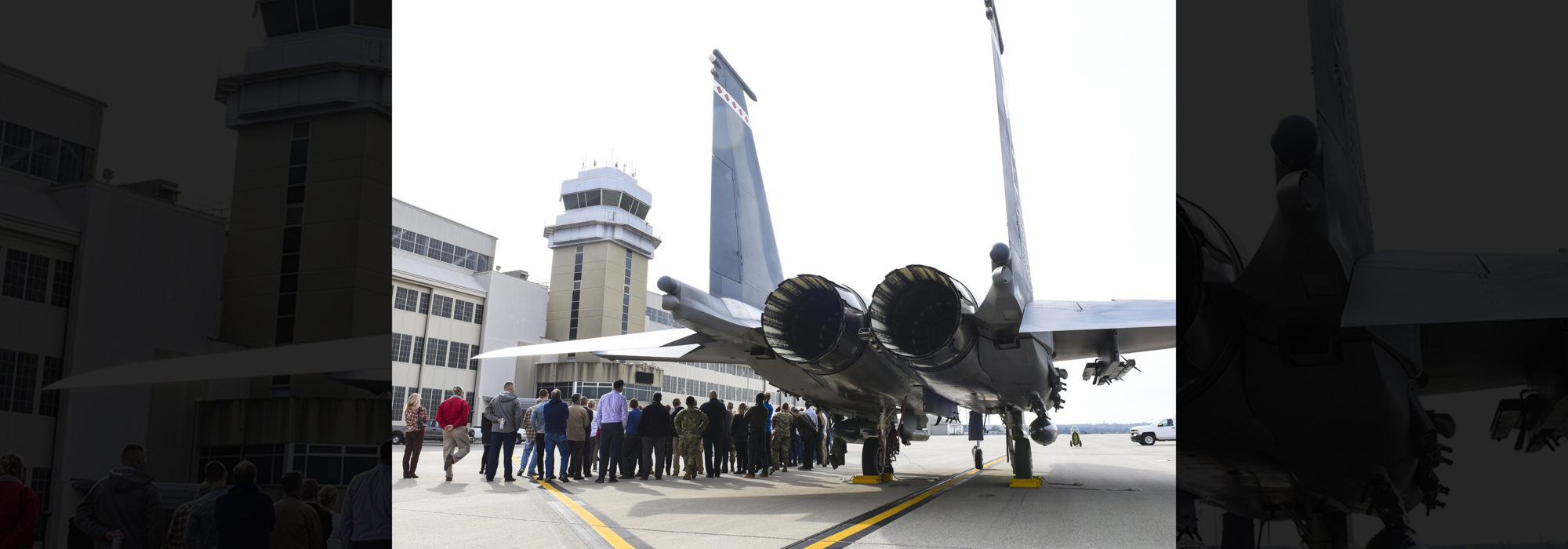Three Legends
The “Wright” in Wright-Patterson Air Force Base, Ohio, honors Wilbur and Orville, the famous aviation gods, but who was “Patterson?”
First Lt. Frank Stuart Patterson was a World War I Army Air Service pilot. He and the Wrights lived in Dayton, knew each other, and are buried in the same cemetery. Patterson was not famous, but worthy of the honor.
Stu Patterson was born into a prominent Dayton family. His father and uncle owned National Cash Register, then one of the most technologically advanced firms in the world. They were tycoons of the late 1800s and early 1900s. (The father died in 1901.)
Stu moved in high social circles. Many male relatives were Yale men. After prep school, he himself entered Yale in the fall of 1914, expecting to graduate in June 1918.
Stu was tall—6 feet 4 inches. One friend said he was “devoted to sports and pathetically afraid of girls,” but that, for all his wealth, he “never heard Stu … play the bigot or snob.”
The World War was a campus preoccupation. Patterson “longed to go,” said a classmate. He even took private flying lessons to ready himself for military pilot duty in Europe.
When the U.S. entered the war in April 1917, Stu was among the first at Yale to go. He was 20 and only a year from graduation, but he was determined to serve, so he packed and left.
Patterson entered the Air Service, completed ground school at MIT, and took pilot training at the Flying School, Mineola, N.Y. In August 1917, he received wings and stepped onto a fast military track.

Patterson breezed through Observer School at Fort Sill, Okla., on his way to test pilot school at Hicks Field, Texas. His next stop: Wilbur Wright Field, opened a year earlier in his hometown.
Units there tested machine guns issued to the Air Service. A major focus was testing of newly installed synchronizers that made it possible for a pilot to fire through blades of a spinning propeller. The testing was dangerous work, requiring steep dives.
On the last day of his life, Lieutenant Patterson and his back-seater, 2nd Lt. LeRoy Swan, took off in an Airco DH.4 biplane and initiated a series of tests. On the third firing cycle, with the bomber diving from 15,000 feet, a tie rod snapped, causing the wings to collapse. The crash killed both Patterson and Swan.
The day was June 19, 1918. In New Haven, it was commencement day for the Yale Class of 1918—Patterson’s class.
In 1927, Wilbur Wright Field was rededicated as Wright Field to honor not just one but both brothers. On July 6, 1931, however, Wright Field was subdivided. The eastern portion was designated as “Patterson Field” in honor of Lieutenant Patterson.
The new United State Air Force later merged the bases into what is today Wright-Patterson Air Force Base. It is one of USAF’s largest and busiest installations. It is a center for technical research and development of all types of Air Force aircraft, and it houses the headquarters of Air Force Materiel Command. Area A of the base is still known to many as “Patterson Field.”
Frank Stuart Patterson
- Born: Nov. 6, 1896, Dayton, Ohio
- Died: June 19, 1918, Riverside, Ohio
- College: Yale University
- Occupation: U.S. military officer
- Services: U.S. Army—Signal Corps, Air Service
- Main Era: World War I
- Years Active: 1917-18
- Final Grade: First lieutenant
- Interred: Woodland Cemetery, Dayton
Wright-Patterson Air Force Base
- State: Ohio
- Nearest City: Dayton
- Area: 12.7 sq mi / 8,145 acres
- Status: Open, operational
- Wilbur Wright Field opened: June 6, 1917
- Patterson Field opened: July 6, 1931
- Wright-Patterson AFB
- dedicated: Jan. 13, 1948
- Current owner: Air Force Materiel Command
- Former owners: (Army) Engineering Division, Materiel Division, Materiel Command, Technical Services Command; (Army/USAF) Air Materiel Command; (USAF) Research and Development Command, Air Research and Development Command, Air Force Systems Command
- Home of: Hq Air Force Materiel Command
Wright Brothers
- Wilbur Wright: 1867-1912
- Orville Wright: 1871-1948
- Occupation: Inventors
- Interred: Woodland Cemetery, Dayton


